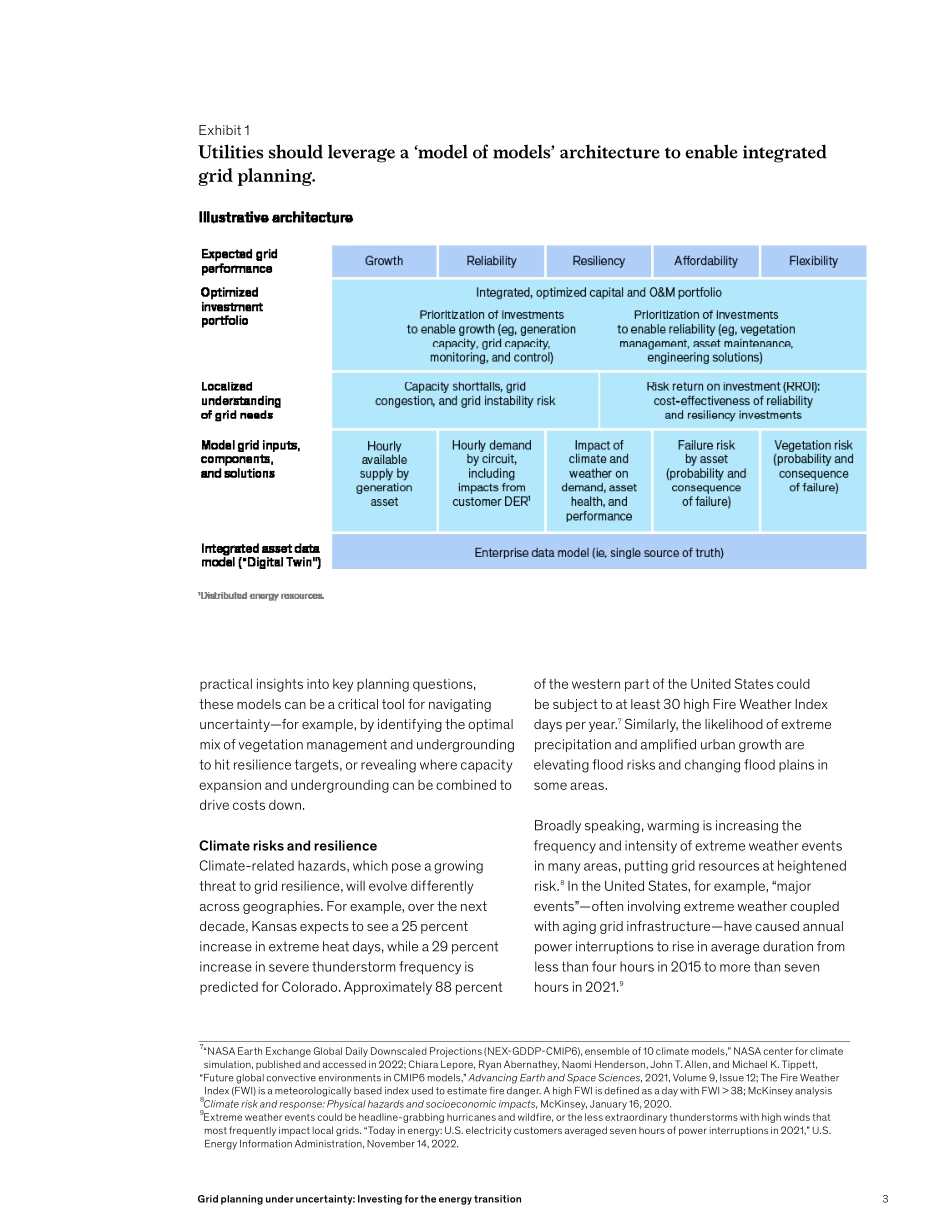Electric Power & Natural Gas and Oil & Gas PracticesGrid planning under uncertainty: Investing for the energy transitionIn the face of climate and transition risks, an updated planning para-digm can help grid operators mitigate evolving challenges and ensure grid resilience and affordability.December 2023© Getty Imagesby Alfonso Encinas Fernandez, Blake Houghton, Adam Rubin, and Aaron SchifrinGlobally, the electricity grids that power the economy are undergoing rapid and profound change. In the United States, policies supporting decarbonization and increasingly cost-competitive renewable resources are transforming the generation stack, with nearly 100 gigawatts (GW) of wind and solar added between 2017 and 2022, a record 32 GW of solar likely to be added in 2023 alone, and nearly 2 terawatts (TW) of capacity in the interconnection queue.1 At the same time, building and transport electrification are adding to demand pressure on these grid networks.Climate risks, including wildfires and severe storms, are on the rise in many geographies, placing additional stress on communities and the power infrastructure that serves them.2 Extreme heat is increasing cooling demand while reducing the efficiency of grid infrastructure. Minnesota, for example, could see a 75 percent increase in extreme heat days over the next decade, equivalent to current levels in Ohio.3Thunderstorms also pose a challenge for grid operators. In New Jersey, for example, where such storms already cause around 80 percent of major outages, the number of thunderstorm-risk days per year is expected to rise by more than two-thirds by 2050.4Such risks come amid heightened concern around affordability, aging infrastructure, and surging inflation, all which have elevated the cost of core essentials by a fifth since 2021.5Altogether, the challenge of providing safe, reliable, resilient, and affordable power—all while enabling the energy transition—is forcing grid planners to reimagine their processes and rethink longstanding 1 Short-term energy outlook data browser, U.S. Energy Information Administration, November 15, 2023; “US solar power capacity to expand by record 32 gigawatts in 2023, report says,” Reuters, September 7, 2023; Tony Lenoir, “US Interconnection Queues Analysis 2023,” S&P Global, August 28, 2023.2 “Climate risk and response: Physical hazards and socioeconomic impacts,” McKinsey, January 16, 2020.3 “NASA Earth Exchange Global Daily Downscaled Projections (NEX-GDDP-CMIP6), ensemble of 10 climate models,” NASA center for climate simulation, published and accessed in 2022; McKinsey analysis.4 Electric Disturbance Events (OE-417) Annual Summaries, U.S. Department of Energy; date range of consideration is from 2002–2022 and defined by events with greater than 50,000 customers impacted; “MACA CMIP5 statistically downscaled climate projections,” U.S. Climate Resilience Toolkit, accessed in...


